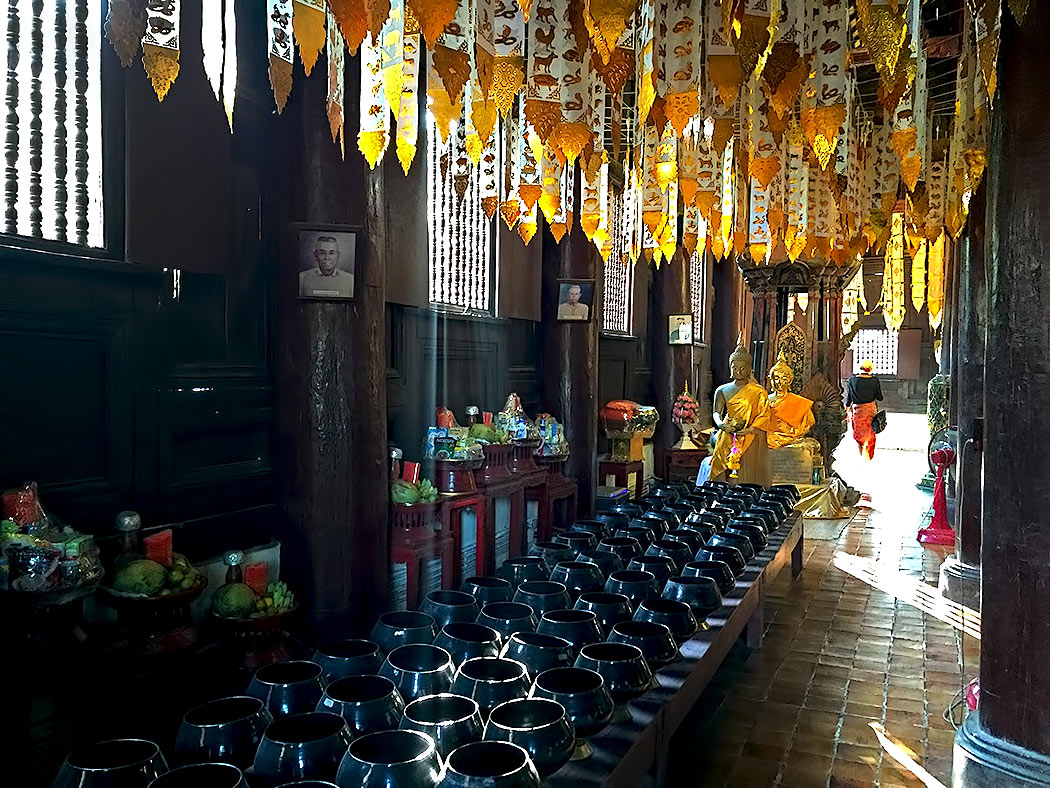
Buddhists earn merit by dropping 108 coins of small denomination in each of the 108 black bowls at Wat Pan Tao in Chiang Mai, Thailand. This area of town is rife with old wats, mostly because at least four were build to serve Wat Chedi Luang, which sits next door and is arguably the most important Wat in the city. Pan Tao is believed to have emerged in the late 14th century as a center for the casting of Buddha images used at Wat Chedi Luang.
Its Viharn (worship hall) was built on another site in the mid-19th century as a residence for the then ruler of Chiang Mai. As was the practice, the subsequent ruler built a new palace, and Pan Tao was moved to its present site. Today the Viharn, which is constructed entirely of teak, is used for prayer by lay people. The 108 black bronze bowls line the left side of the Viharn. 108 is considered a sacred number in Buddhism. Google the term “meaning of 108 in Buddhism” and you will find myriad answers. In the Mahayana tradition, which I practice, the number 108 is auspicious, as it represents the 108 volumes of the Kangyur, one of two sacred texts recognized by various sects of Tibetan Buddhism. Additionally, there is a popular Tibetan Buddhist prayer entitled One Hundred and Eight Verses in Praise of Great Compassion, and Buddhist prayer beads also contain 108 beads. In Theravadan Buddhism, which is the form practiced in Thailand, the number has come to represent good fortune, thus Buddhists earn merit and ensure good luck by dropping 108 coins into the bowls at Wat Pan Tao.

Thanks for sharing. This blog really has pretty articles to read on.
Thanks so much for this article. Blogs is the best way to connect with people and to be intentional about our views.